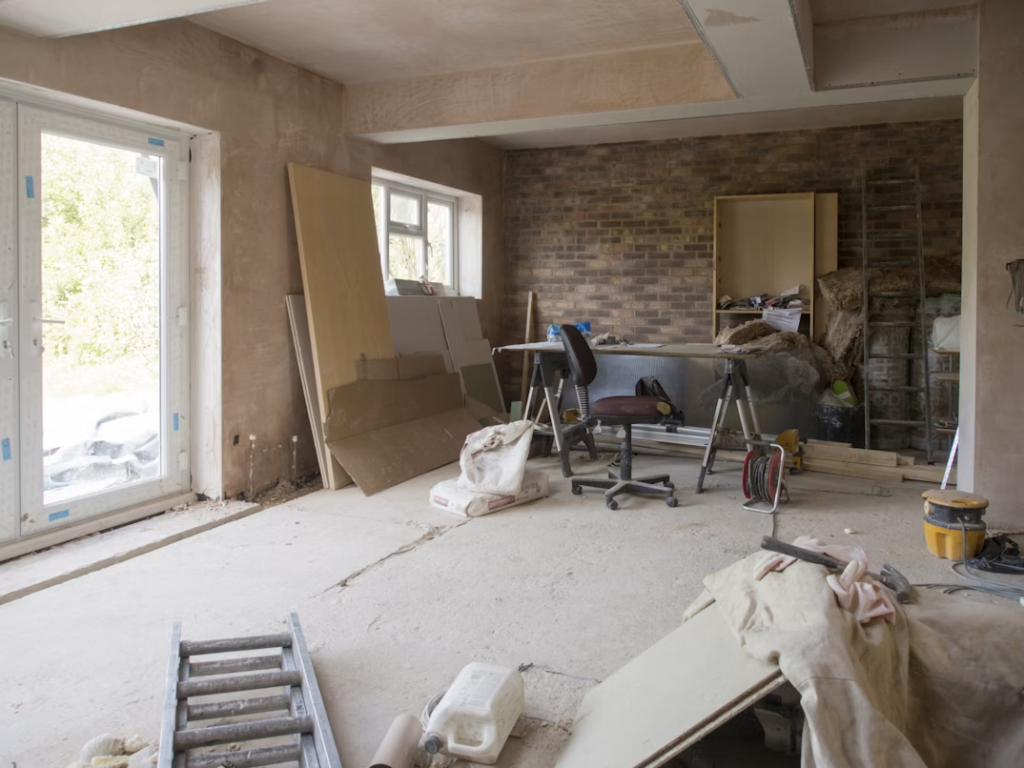Undertaking a renovation project can feel overwhelming, whether it’s a small kitchen refresh or a complete house extension. Many households face setbacks when projects are not organised well.
To reduce stress and protect your investment, it’s worth understanding the stages of managing renovations smoothly: from planning to after-service support.

Just as with carefully designed timber carports Melbourne homeowners rely on, solid planning and ongoing support are what create lasting value.
Planning Your Renovation
Every successful project begins with thorough preparation. Without planning, delays, cost overruns, and misunderstandings are far more likely.
Setting Goals
Start by clarifying what you want to achieve. Is the renovation to increase liveability, improve property value, or accommodate a growing family? Write down your main goals and separate them from “nice to have” extras.
Budgeting
Budgeting is a cornerstone of managing renovations smoothly: from planning to after-service support.
A budget that only covers the basics without accounting for unforeseen costs often leads to financial strain. Allocate at least 10–15% of your budget for unexpected issues like hidden structural damage or design adjustments.
Council Approvals
Depending on the scale of your project, local council approvals may be required. Submitting applications early prevents work from being delayed later. Building permits, zoning rules, and heritage overlays should all be checked at this stage.
Choosing the Right Team
The quality of your contractors determines whether the project is a success or a source of frustration.
Researching Professionals
Look for licensed builders, designers, and trades who have proven experience with projects similar to yours. Request references, check insurance, and review portfolios of past work.
Comparing Quotes
Get multiple quotes rather than settling on the first option. Compare inclusions carefully; the cheapest may not provide the best outcome if materials or labour are compromised.
Contracts and Communication
Written contracts protect both you and your contractor. They should cover timelines, payment schedules, materials, and responsibilities. Establish clear communication channels, such as weekly progress updates.
Designing for Functionality and Style
Good design balances appearance and practicality. Poor design decisions can cause everyday frustrations and reduce long-term value.
Layout Planning
Think carefully about how spaces will be used. For example, kitchens should have efficient work zones, while bathrooms need adequate storage and ventilation.
Material Selection
Durability should guide material choices. Opt for quality flooring, cabinetry, and fittings that can withstand daily use. Cutting corners on key areas often leads to premature replacements.
Sustainability
Incorporating sustainable design reduces running costs and supports eco-friendly living. Consider energy-efficient windows, insulation, and water-saving fixtures.
Managing Renovations Smoothly: From Planning to After-Service Support During Construction
Construction is often the most stressful stage. However, careful oversight reduces issues.
Site Preparation
Before work starts, protect parts of the home not under renovation. Dust barriers, temporary fencing, and proper waste disposal arrangements all help keep the process smooth.
Monitoring Progress
Regular site visits allow you to monitor progress and raise concerns quickly. Keeping a log of conversations and updates helps avoid misunderstandings.
Handling Delays
Weather, supply shortages, or unexpected discoveries can cause setbacks. Managing renovations smoothly: from planning to after-service support involves anticipating delays and adjusting schedules with flexibility.
Safety and Compliance
Ignoring safety is one of the most common mistakes homeowners make.
On-Site Safety
Ensure tradespeople follow safety regulations and use protective gear. Keep children and pets away from construction zones to prevent accidents.
Legal Compliance
Builders must adhere to Australian Standards and building codes. Ask for documentation that confirms compliance to avoid future liability.
Financial Management During Renovations
Cost overruns are among the most stressful aspects of renovations. Keeping finances under control is essential.
Payment Schedules
Agree on staged payments tied to milestones. Avoid paying large sums upfront. Progress-based payments provide security and ensure accountability.
Tracking Expenses
Keep detailed records of invoices and receipts. Simple spreadsheets can help track actual costs against the budget.
Managing Renovations Smoothly: From Planning to After-Service Support With Communication
Clear communication is central to avoiding misunderstandings.
Regular Updates
Schedule weekly or fortnightly meetings with your contractor. These updates keep you informed about progress, challenges, and next steps.
Documenting Changes
Any change to design, materials, or scope should be put in writing. This avoids disputes over costs or what was agreed upon.
After-Service Support and Maintenance
The project does not end once construction is finished. Ongoing support ensures your investment lasts.
Warranties and Guarantees
Builders and suppliers often provide warranties on workmanship and materials. Keep all documents safe and understand what is covered.
Maintenance Guidelines
Managing renovations smoothly: from planning to after-service support also means caring for the finished work. Ask for advice on cleaning, resealing, or servicing key elements like flooring and roofing.
Follow-Up Inspections
Schedule follow-up inspections a few months after completion. This allows contractors to address minor issues such as cracks, leaks, or faulty fittings before they worsen.
Common Pitfalls and How to Avoid Them
Learning from common mistakes helps homeowners achieve smoother projects.
Pitfall: Rushing the Planning Stage
Skipping thorough preparation often leads to costly design changes during construction. Solution: Spend enough time defining your goals and finalising designs before starting.
Pitfall: Ignoring Hidden Problems
Covering up structural issues without repair leads to bigger problems later. Solution: Always inspect the property and address underlying issues before cosmetic work.
Pitfall: Over-Customising
Highly personal designs may not appeal to future buyers. Solution: Balance individuality with timeless choices.
The Role of Technology in Renovations
Technology is increasingly used to manage projects effectively.
Design Software
3D modelling tools allow homeowners to visualise layouts before construction begins, reducing costly changes later.
Project Management Tools
Simple apps can track budgets, schedules, and communication, keeping everything in one place.
Outdoor Additions as Part of Renovations
Many households integrate outdoor improvements into renovation projects for added functionality.
Patios and Decks
Creating outdoor living spaces enhances property value and lifestyle.
Carports
Adding a carport is a cost-effective way to protect vehicles and increase versatility. It can also tie in with broader renovation plans, improving both functionality and street appeal.
Conclusion
Managing renovations smoothly: from planning to after-service support requires careful attention at every stage.
From defining goals and hiring the right team to monitoring progress and maintaining the finished work, each step builds toward long-term success.
Renovations are not just about creating beautiful spaces—they are about ensuring durability, safety, and value for years to come.
Frequently Asked Questions
How can I keep renovation costs under control?
Set a realistic budget, include a contingency fund, and track expenses regularly. Agree on staged payments and avoid making major design changes once work has started.
What should I look for in a contractor?
Check licences, insurance, and references. Choose professionals who provide detailed contracts and communicate clearly throughout the project.
How long does the after-service support period last?
Most builders provide a warranty period of six to twelve months, covering defects in workmanship or materials. Some structural components may have longer guarantees.
